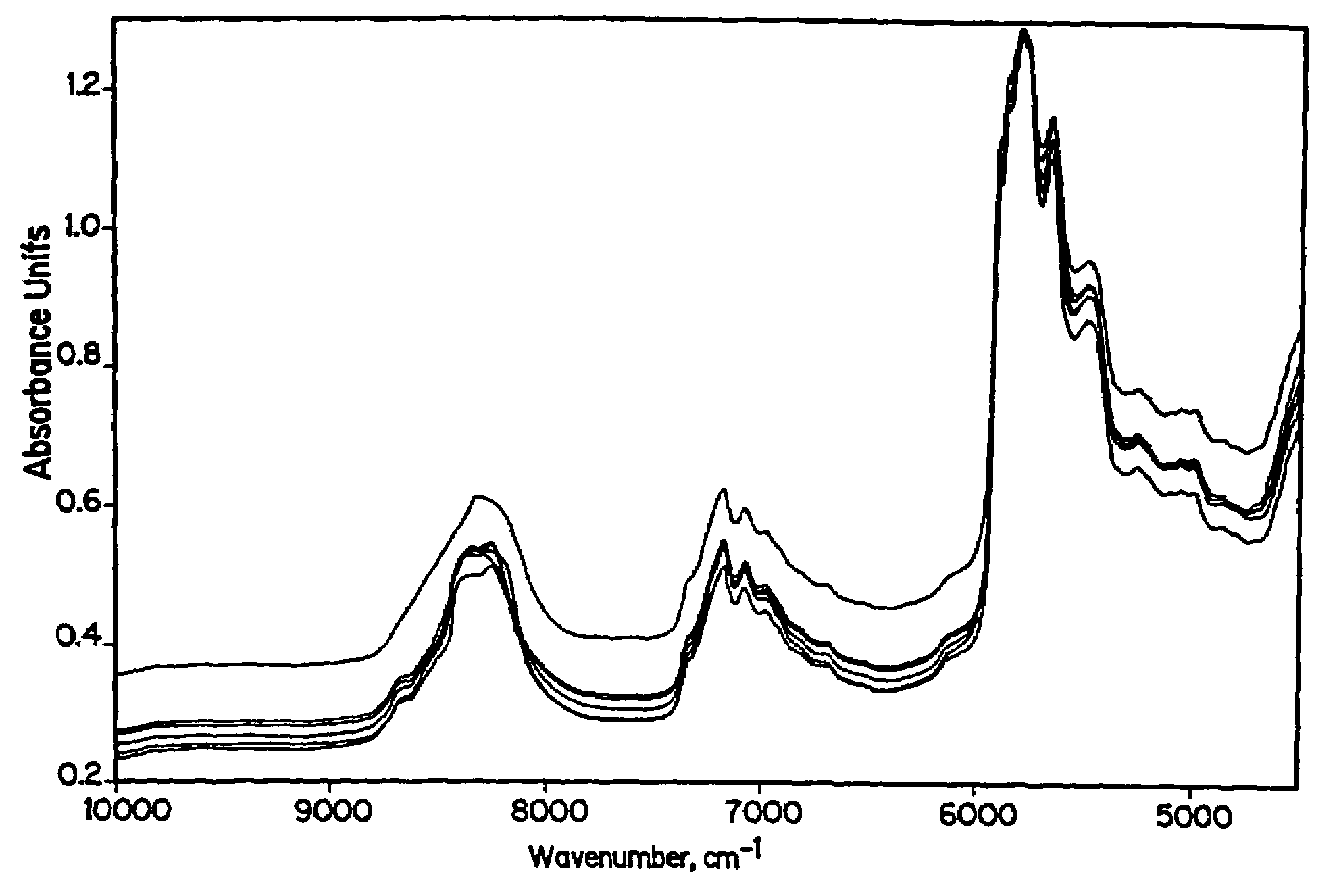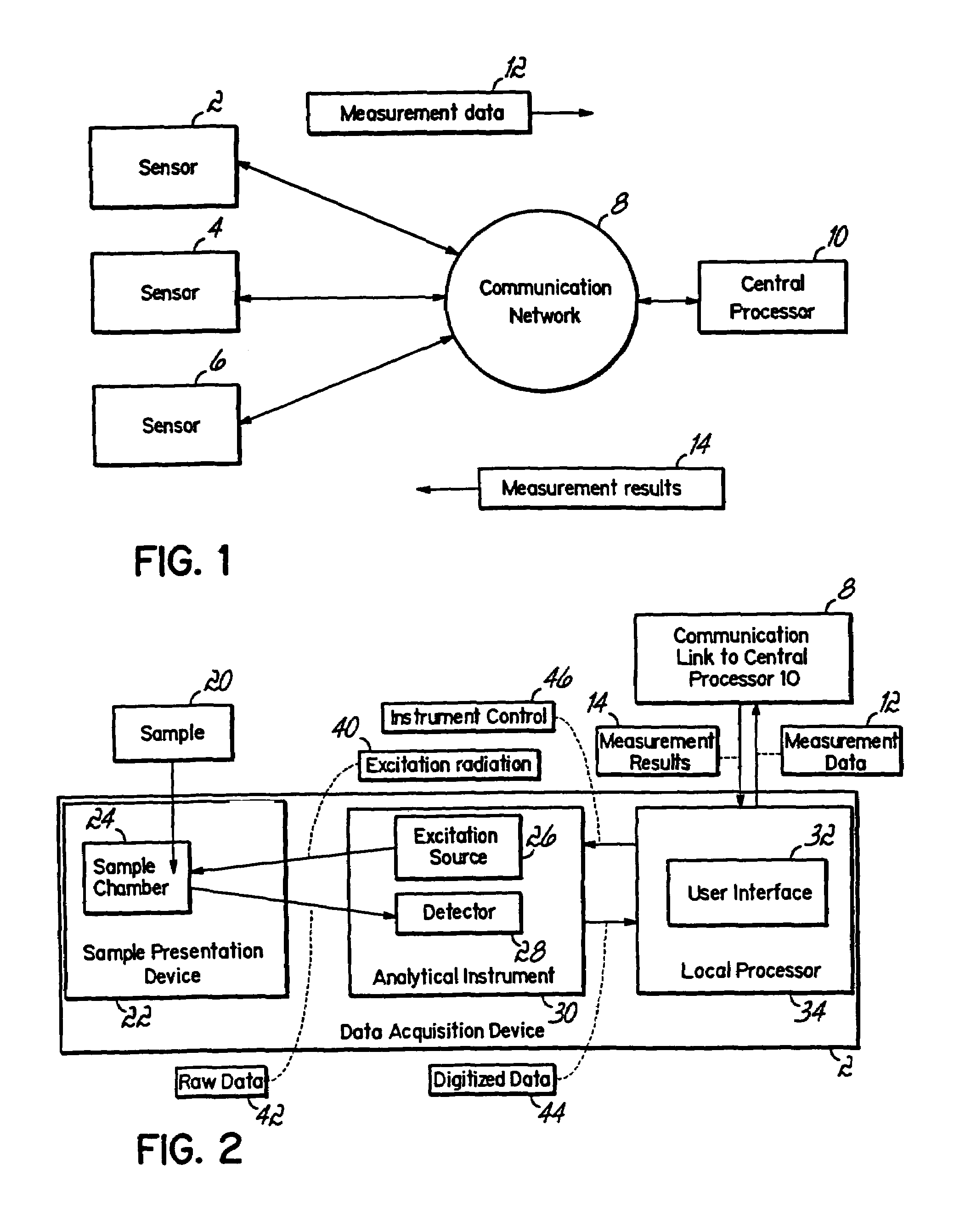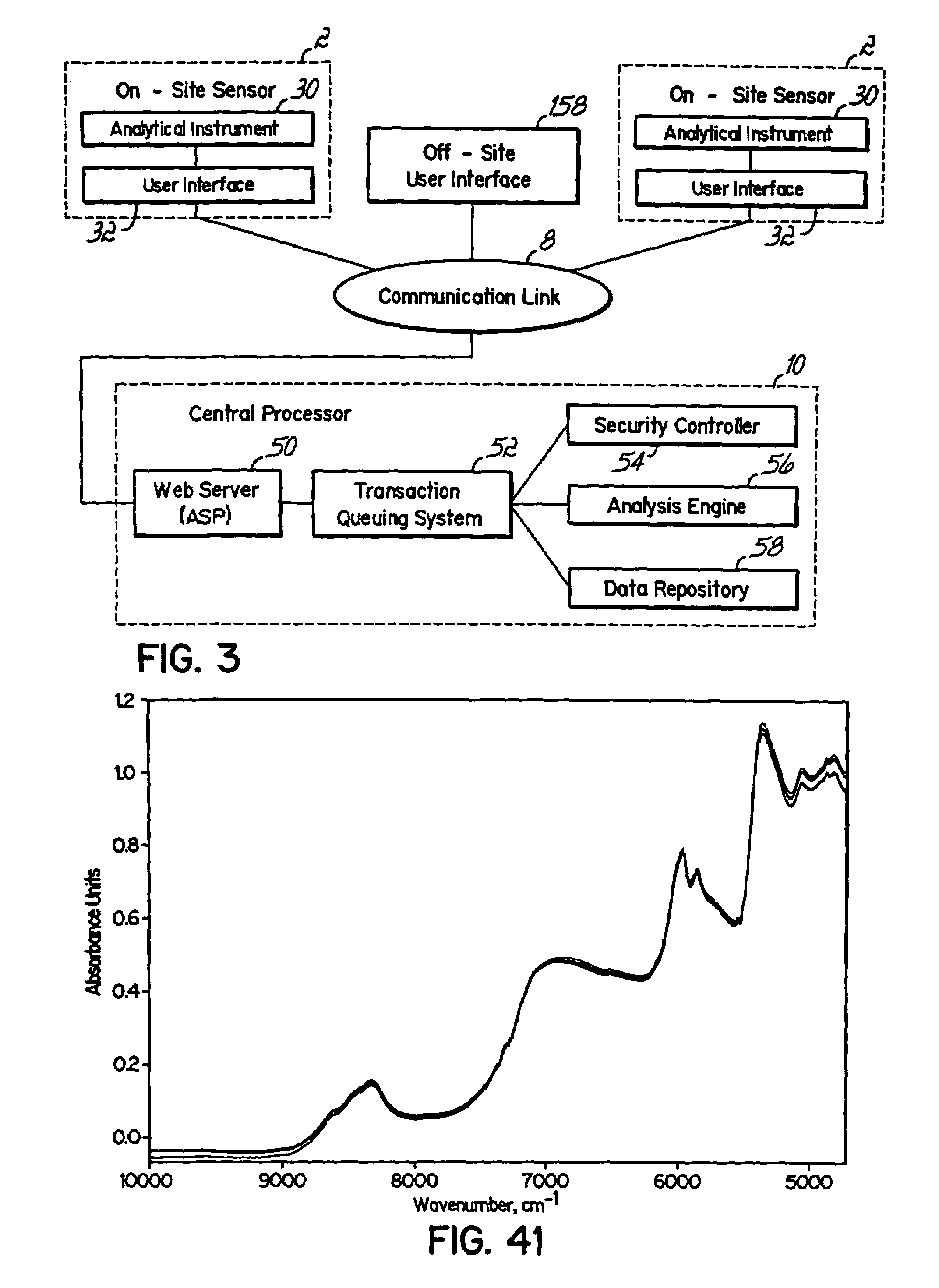On-site analysis system with central processor and method of analyzing
a technology of analysis system and analyzer, applied in the field of material processing, can solve the problem that analytical instruments do not generate values
- Summary
- Abstract
- Description
- Claims
- Application Information
AI Technical Summary
Benefits of technology
Problems solved by technology
Method used
Image
Examples
example 1
[0196]A feasibility study was done to determine if a property model could be developed to measure the concentration of squalane in squalene. In accordance with block 70 of FIG. 4, the method was defined as FT-NIR using the MATRIX Model F instrument manufactured by Bruker Optics, with sample presentation for liquid samples provided by closure caps with dimensions of 18-mm diameter×10-mm high manufactured by Cincinnati Container Corporation. The objectives for the property model included measurements of squalane in squalene having concentrations ranging from trace amounts to about 10 weight percent with a limit of desired precision of 0.10% or smaller as measured by RMSEP. The objectives further indicated that the measurements will be taken by non-skilled operators who will dispense about 1 mL of liquid samples into separate, disposable caps, and the sample temperature may vary from about 0° C. to 60° C. In accordance with the block 72 of FIG. 4, the expected range of the concentratio...
example 2
[0205]The light intensity of the environment is a potentially influential factor (block 84). The lights are expected to be either on or off. To determine if a difference in the intensity of background light in the room will affect the concentrations predicted by Model 1.1 (block 88), the spectrum of a single sample with an observed value of 2.00% of squalane in squalene was acquired four times with the overhead fluorescent room lights on and four times with the lights off without changing any other measurement conditions. FIG. 10 shows the superposition of the resulting eight spectra. Since no measurable differences are observed between the spectra, variations in the light intensity of this particular environment will not affect the predicted concentrations.
[0206]To further demonstrate that the light intensity is not an influential factor, Model 1.1 was used to compute predicted values of the concentrations corresponding to each of the eight spectra for the 2.00% squalane samples. A...
example 3
[0208]The orientation of the sample cap is a potentially influential factor (block 84). The orientations are expected to be random. To determine if variation in the orientation of the sample cap (block 86) will affect the predicted concentrations (block 88), a sample of 1.00% of squalane in squalene was prepared and measured with four different cap orientations. The initial orientation of the cap was selected at random, and additional orientations were attained by successively rotating the cap by approximately 90 degrees about an axis perpendicular to the bottom of the cap between measurements. As shown in FIG. 11, measurable differences were observed in these spectra, indicating that orientational variance is probably an influential factor.
[0209]The six calibration samples in the training set of Example 1, each with a sample cap orientation labeled as orientation 1, were then measured with three additional orientations selected at random, labeled as orientations 2, 3, and 4, each r...
PUM
| Property | Measurement | Unit |
|---|---|---|
| humidity | aaaaa | aaaaa |
| diameter | aaaaa | aaaaa |
| temperature | aaaaa | aaaaa |
Abstract
Description
Claims
Application Information
 Login to View More
Login to View More - R&D
- Intellectual Property
- Life Sciences
- Materials
- Tech Scout
- Unparalleled Data Quality
- Higher Quality Content
- 60% Fewer Hallucinations
Browse by: Latest US Patents, China's latest patents, Technical Efficacy Thesaurus, Application Domain, Technology Topic, Popular Technical Reports.
© 2025 PatSnap. All rights reserved.Legal|Privacy policy|Modern Slavery Act Transparency Statement|Sitemap|About US| Contact US: help@patsnap.com



